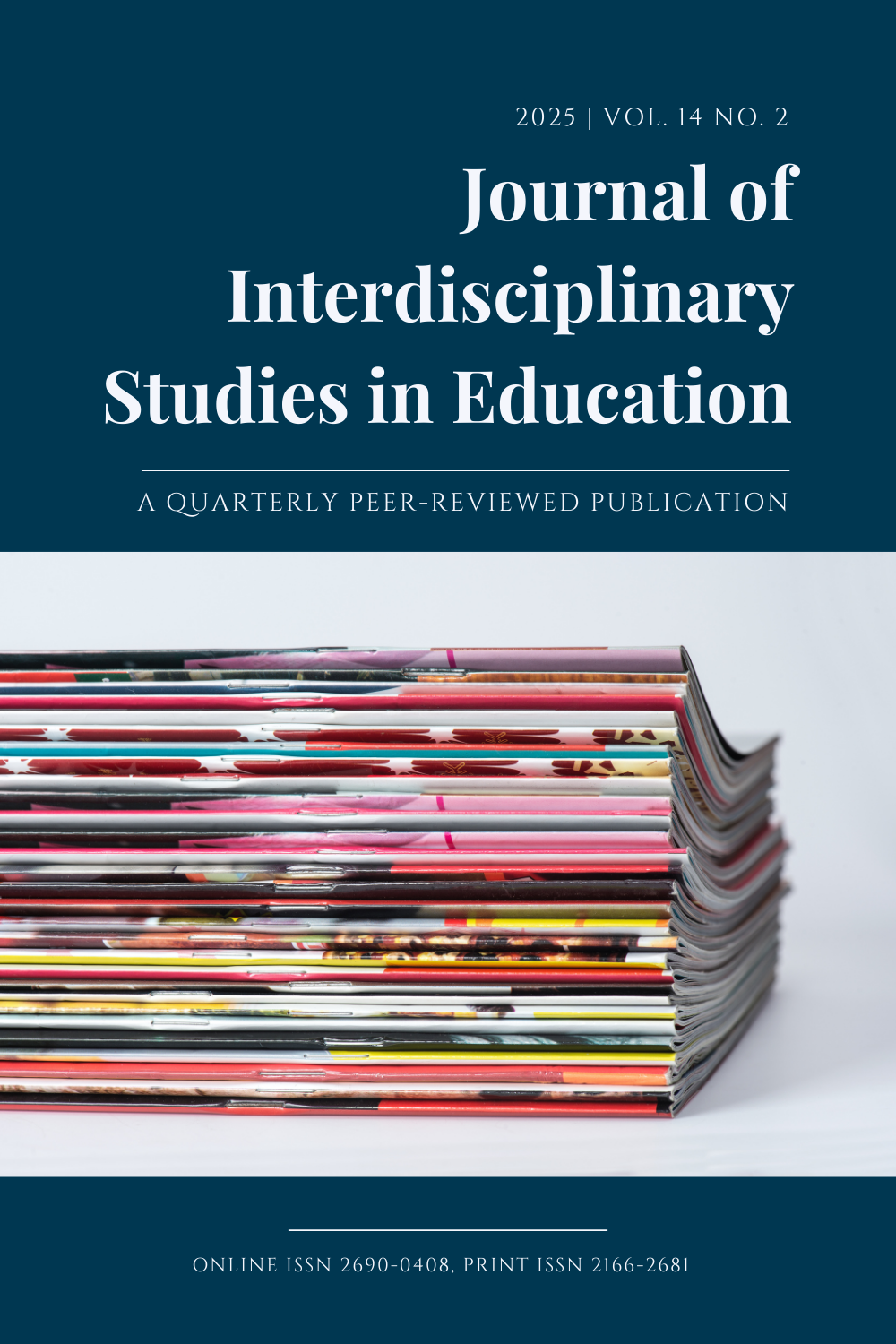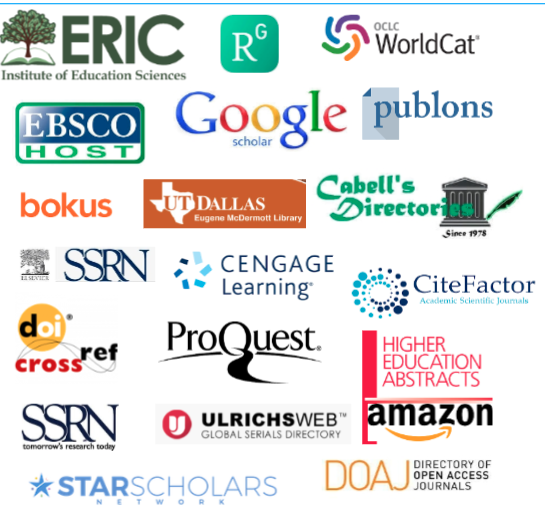Transforming piano tuition
A cross-arts approach inspired by “Peter and the Wolf”
DOI:
https://doi.org/10.32674/j866he68Keywords:
cross-arts instructional design, musical instrument learning, Peter and the Wolf, innovative teaching, integrated curriculumAbstract
This study explores the impact of interdisciplinary pedagogies combining music and other art forms on elementary piano students. Using action research, we assessed eight students and their parents through pre-, post-, and follow-up tests (June 2022–May 2023). The intervention incorporated story narratives, movement, music creation, and visual art, with data from field notes, diaries, video recordings, focus groups, and surveys. Qualitative data were analyzed through theoretical coding, and quantitative data via descriptive statistics. Results showed positive outcomes, particularly in addressing home practice challenges. This study underscores how interdisciplinary approaches reshape student attitudes, enhance learning outcomes in music education, and foster a sense of accomplishment
Downloads
References
Allaniyazov, B. (2024). The ways of increasing the effectiveness of learning through innovative technologies in music lessons. Евразийский Журнал Академических Исследований, 4(2), 41–45.
Anderson, R. L. (1990). Popular art and aesthetic theory: Why the muse is unembarrassed. Journal of Aesthetic Education, 24(4), 33–46. https://doi.org/10.2307/3333105
Anderson, T. (2003). Art education for life. International Journal of Art & Design Education, 22(1), 58–66. https://doi.org/10.1111/1468-5949.00339
Arslanian, H. (2022). Future trends to watch. In H. Arslanian (Ed.), The book of crypto: The complete guide to understanding bitcoin, cryptocurrencies and digital assets (pp. 381–393). Springer.
Avison, D. E., Lau, F., Myers, M. D., & Nielsen, P. A. (1999). Action research. Communications of the ACM, 42(1), 94–97. https://doi.org/10.1145/291469.291479
Bhukhanwala, F., Dean, K., & Troyer, M. (2017). Beyond the student teaching seminar: Examining transformative learning through arts-based approaches. Teachers and Teaching, 23(5), 611–630. https://doi.org/10.1080/13540602.2016.1219712
Bilalovic Kulset, N. B., & Halle, K. (2020). Togetherness!: Adult companionship – The key to music making in kindergarten. Music Education Research, 22(3), 304–314. https://doi.org/10.1080/14613808.2020.1765155
Bloom, A. (2008). Closing of the American mind. Simon & Schuster.
Bonaccorso, J. (2001). Aspects of cross arts correspondence. Victorian Journal of Music Education, (2000-2001), 3–5.
Bonds, M. E. (2014). Absolute music: The history of an idea. Oxford University Press.
Davies, C. (1992). Listen to my song: A study of songs invented by children aged 5 to 7 years. British Journal of Music Education, 9(1), 19–48. https://doi.org/10.1017/S0265051700008676
Davila, T., Epstein, M., Shelton, R., Cagan, J. M., & Vogel, C. M. (2013). How to become innovative. FT Press.
Doyle, D. (2021). Creative and collaborative practices in virtual immersive environments. In A. Hui & C. Wagner (Eds.), Creative and collaborative learning through immersion: Interdisciplinary and international perspectives (pp. 3–19). Springer. https://doi.org/10.1007/978-3-030-72216-6_1
Drotos, R. (2023). The inner game of piano improvisation. KeyboardImprov.
Duibhir, P. Ó. (2018). Immersion education: Lessons from a minority language context. Multilingual Matters.
Eichorn, N., Caplan, J., Levy, M., Zarn, M., Moncrieff, D., Sposto, C., & Hoffman, J. E. (2020). Breaking the ice: Use of music improvisation to facilitate interprofessional communication. Journal of Interprofessional Education and Practice, 21, 100379. https://doi.org/10.1016/j.xjep.2020.100379
Faulkner, R. (2003). Group composing: Pupil perceptions from a social psychological study. Music Education Research, 5(2), 101–124. https://doi.org/10.1080/1461380032000085504
French, L. (2005). Improvisation: An integral step in piano pedagogy [Music Honors Theses]. Trinity University.
Ginsborg, H. (2017). Two debates about absolute music. The British Journal of Aesthetics, 57(1), 77–80. https://doi.org/10.1093/aesthj/ayw055
Gordon, E. (2009). Rhythm: Contrasting the implications of audiation and notation. GIA Publications.
Green, L. (2005). The music curriculum as lived experience: Children’s “natural” music-learning processes. Music Educators Journal, 91(4), 27–32. https://doi.org/10.2307/3400155
Gromko, J. E. (2004). Predictors of music sight-reading ability in high school wind players. Journal of Research in Music Education, 52(1), 6–15. https://doi.org/10.2307/3345521
He, J., Wing, C. K., & Hoe, T. W. (2023). The cultivation of children’s musical creative practical competency: A literature review. Thinking Skills and Creativity, 48, 101309. https://doi.org/10.1016/j.tsc.2023.101309
Hesse-Biber, S. N., & Leavy, P. (2010). The practice of qualitative research. SAGE.
Hirsch, E. (2011). Beyond comprehension: We have yet to adopt a common core curriculum that builds knowledge grade by grade—But we need to. American Educator, 34(4), 30–36.
Ho, C.-H. (2001). Some phenomena of problem decomposition strategy for design thinking: Differences between novices and experts. Design Studies, 22(1), 27–45. https://doi.org/10.1016/S0142-694X(99)00030-7
Hogenes, M., Oers, B. V., & Diekstra, R. F. (2014). Music composition in the music curriculum. US–China Education Review A, 4(3), 149–162. https://doi.org/10.17265/2161-623X/2014.03A.002
Hogenes, M., Van Oers, B., Diekstra, R. F. W., & Sklad, M. (2016). The effects of music composition as a classroom activity on engagement in music education and academic and music achievement: A quasi-experimental study. International Journal of Music Education, 34(1), 32–48. https://doi.org/10.1177/0255761415584296
Ivanitskaya, L., Clark, D., Montgomery, G., & Primeau, R. (2002). Interdisciplinary learning: Process and outcomes. Innovative Higher Education, 27(2), 95–111. https://doi.org/10.1023/A:1021105309984
Ivankova, N., & Wingo, N. (2018). Applying mixed methods in action research: Methodological potentials and advantages. American Behavioral Scientist, 62(7), 978–997. https://doi.org/10.1177/0002764218772673
Jacobs, H. H. (1989). Interdisciplinary curriculum: Design and implementation. Association for Supervision and Curriculum Development.
Kim, K., Hornor, E., & Zarrabi, A.-J. (2024). The museum as a shared space: Developing contextual and cross-disciplinary approaches to arts-based education. Advances in Medical Education and Practice, 15, 761–769. https://doi.org/10.2147/AMEP.S464634
King, R., McHugh, D., Alexander, J., Kiely, J., Yiannaki, C., & Rhodes, D. (2024). MultiDisciplinary Team Practitioners Working in High Performance Sport: Skilled intuitive “doers” or novel problem-solving innovators. European Journal of Sport Sciences, 3(2), 15–26. https://doi.org/10.24018/ejsport.2024.3.2.143
Klein, J. T. (2005). Integrative learning and interdisciplinary studies. Peer Review, 7(4), 8–10.
Klein, J. T. (2018). Learning in transdisciplinary collaborations: A conceptual vocabulary. In D. Fam, L. Neuhauser, & P. Gibbs (Eds.), Transdisciplinary theory, practice and education: The art of collaborative research and collective learning (pp. 11–23). Springer.
Klein, J. T. (2022). Building capacity for transformative learning: Lessons from crossdisciplinary and cross-sector education and research. Environment, Development and Sustainability, 24(6), 8625–8638. https://doi.org/10.1007/s10668-021-01802-5
Kratus, J. (1994). The ways children compose. In H. Lees (Ed.), Musical connections: Tradition and change (pp. 128–140). ISME.
Krevel, A., & Žnidaršič, J. (2024). The frequency of music improvisation activities in the fourth and fifth grade of primary school. Center for Educational Policy Studies Journal. https://doi.org/10.26529/cepsj.1783
Lipman, M. (1982). Philosophy for children. Thinking, 3(3), 35–44. https://doi.org/10.5840/thinking1982339
Mountain, R. (2022). Music: A versatile interface for explorations in art & science. Interdisciplinary Science Reviews, 47(2), 243–258. https://doi.org/10.1080/03080188.2022.2035107
Ng, D. T. K., Ng, E. H. L., & Chu, S. K. W. (2022). Engaging students in creative music making with musical instrument application in an online flipped classroom. Education and Information Technologies, 27(1), 45–64. https://doi.org/10.1007/s10639-021-10568-2
Ní Dhiorbháin, A., & Ó Duibhir, P. (2017). An explicit-inductive approach to grammar in Irish-medium immersion schools. Language Awareness, 26(1), 3–24. https://doi.org/10.1080/09658416.2016.1261870
Pallonetto, L., Aiello, F., & Palumbo, C. (2022). Inclusive practices and music education: Edwin Gordon’s theory. Italian Journal of Health Education, Sport and Inclusive Didactics, 6(1), 1–10.
Pascarella, E. T., & Terenzini, P. T. (1991). How college affects students: Findings and insights from twenty years of research. Jossey-Bass.
Pederson, S. (2009). Defining the term “absolute music” historically. Music and Letters, 90(2), 240–262. https://doi.org/10.1093/ml/gcp009
Prokofieff, S, & Haacken, F. (1968). Peter and the wolf. Victor.
Prokofiev, S. (1936). Peter and the wolf (M. Fine, Arr.). Peter_and_the_Wolf_Demo_-_score_and_parts.pdf.
Read, H. (1948). Education through art. Faber & Faber.
Ruthmann, A. (2007). The composers’ workshop: An approach to composing in the classroom. Music Educators Journal, 93(4), 38–43. https://doi.org/10.1177/002743210709300416
Self, G. (2017). Light music in Britain since 1870: A survey. Routledge.
Sheppard, A., & Broughton, M. C. (2020). Promoting wellbeing and health through active participation in music and dance: A systematic review. International Journal of Qualitative Studies on Health and Well-Being, 15(1), 1732526. https://doi.org/10.1080/17482631.2020.1732526
Su, Y. T. (2024). Trends in international music education: Embracing cross-curricular integration in music education. Journal of Education and Research, 357, 111–123.
Şuteu, L.-C. (2020). The psychology of music creation. Bulletin of the Transilvania University of Braşov. Performing Arts, Series VIII, 13(2-Suppl), 305–312. https://doi.org/10.31926/but.pa.2020.13.62.3.33
UNCTAD. (2010). Creative economy report 2010: Creative economy: A feasible development option. http://unctad.org/en/Docs/ditctab20103_en.pdf
Vygotsky, L. S. (1981). The instrumental method in psychology. In J. V. Wertsch (Ed.), The concept of activity in Soviet psychology (pp. 135–143). M.E. Sharpe.
Wagemans, A., & Witschge, T. (2019). Examining innovation as process: Action research in journalism studies. Convergence, 25(2), 209–224. https://doi.org/10.1177/1354856519834880
Wayman, A. (2021). Estimable Rhetoric: How one cross-disciplinary approach can revolutionize music performance [Unpublished doctoral dissertation]. The Ohio State University.
Webster, P. R. (2003). What do you mean, make my music different? Encouraging revision and extensions in children’s music composition. In M. Hickey (Ed.), Why and how to teach music composition: A new horizon for music education (pp. 55–68). MENC.
Wiggins, J., & Espeland, M. (2012). Creating in music learning contexts. In G. McPherson & G. Welch (Eds.), The Oxford handbook of music education (pp. 341–360). Oxford University Press.
Wiggins, J. H. (1993). The nature of children’s musical learning in the context of a music classroom [Unpublished doctoral dissertation]. University of Illinois at Urbana-Champaign.
Willoughby, D. (2021). Comprehensive musicianship. Visions of Research in Music Education, 16(1), 28.
Zygouris-Coe, V. I. (2014). Teaching discipline-specific literacies in grades 6–12: Preparing students for college, career, and workforce demands. Routledge.
Additional Files
Published
Issue
Section
License
Copyright (c) 2024 Wei Chen Wu, Ming Turner, Chia-Han Yang

This work is licensed under a Creative Commons Attribution-NonCommercial-NoDerivatives 4.0 International License.







